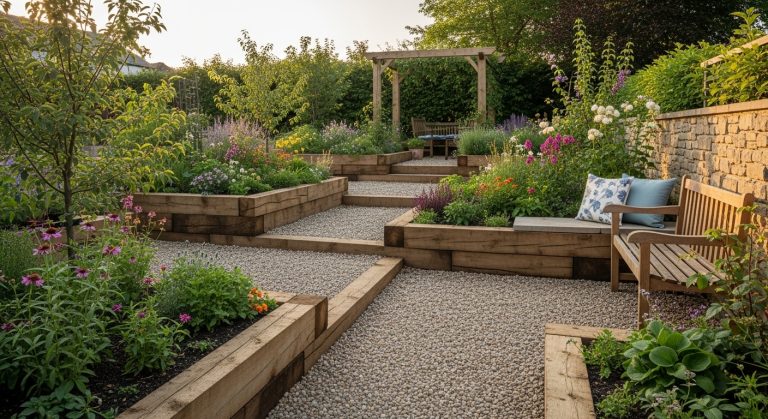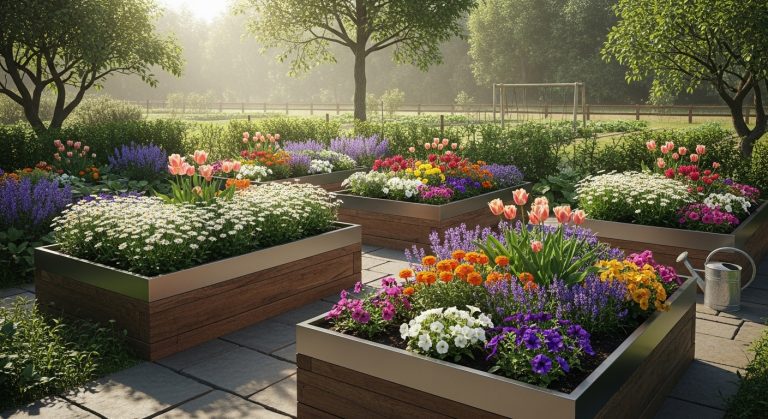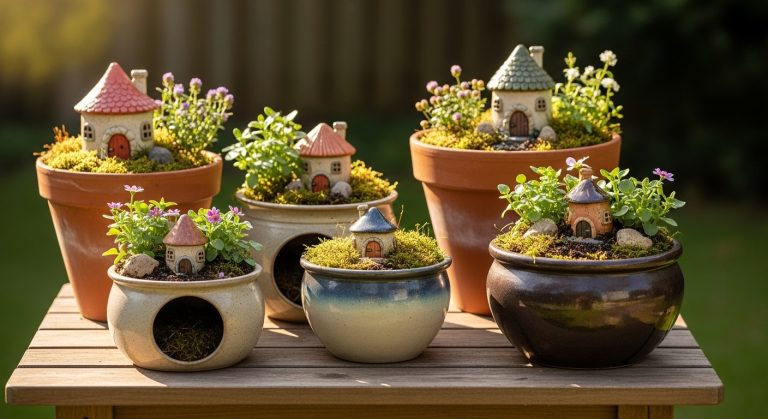Garden Hammock Ideas: 15 Relaxing Ways to Create Your Outdoor Sanctuary
There’s something about a hammock that instantly makes life feel slower, softer, and sweeter. Maybe it’s the way it sways gently with the breeze, or how it invites you to drop everything and just be for a while. Whatever the reason, garden hammocks have a kind of magic no outdoor lounge chair can compete with.
Whether you have a sprawling backyard, a compact courtyard, or a small patio that just needs a touch of calm, there’s a hammock style for every space and mood. Below are 15 unique garden hammock ideas — from rustic retreat vibes to resort-worthy relaxation setups — all designed to transform your garden into the ultimate chill zone.
1. Classic Tree-Hung Hammock

There’s nothing more timeless than a hammock strung between two sturdy trees. It’s simple, nostalgic, and perfect for those lazy Sunday afternoons with a book in hand.
Pros:
- Low cost and high charm: All you need are two healthy trees and a good hammock.
- Naturally shaded: Trees provide organic cover from harsh sunlight.
- Blends seamlessly: Feels like a natural part of your garden landscape.
Cons:
- Tree spacing limits placement: Not every yard has ideal anchor points.
- Requires strong, healthy trees: Weak trunks or branches can be unsafe.
Takeaway:
A tree-hung hammock feels like summer distilled into one image — classic, breezy, and effortlessly comforting.
2. Freestanding Hammock Stand
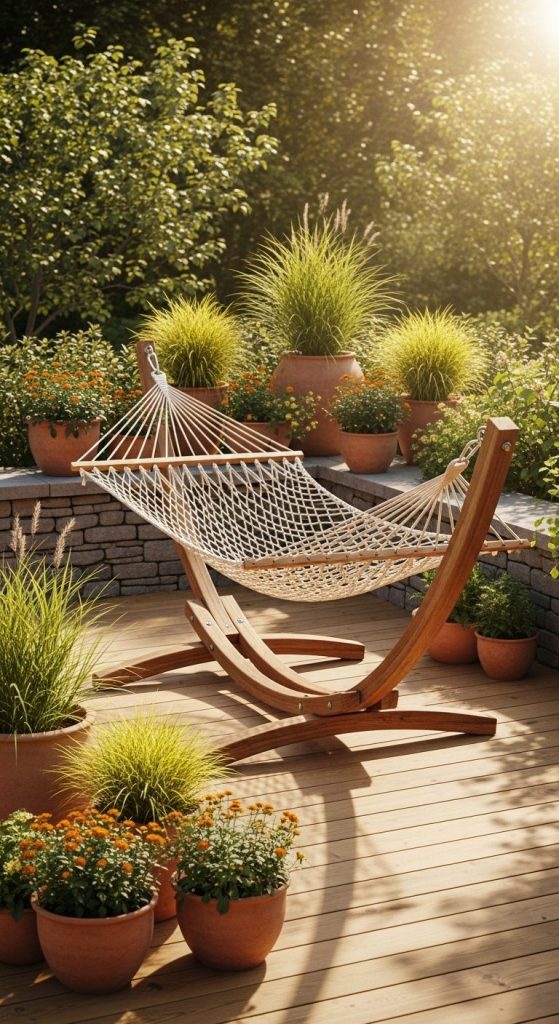
No trees? No problem. A freestanding hammock stand gives you freedom to set up anywhere — patio, deck, or lawn.
Pros:
- Portable and flexible: Move it wherever the sun (or shade) feels best.
- Stylish modern designs: Available in wood, steel, or powder-coated frames.
- Perfect for renters: No need for permanent fixtures.
Cons:
- Takes up more ground space: Not ideal for tiny patios.
- Heavier stands can be tough to move once set.
Takeaway:
A freestanding hammock is the easiest way to bring resort vibes home — minimal setup, maximum relaxation.
3. Bohemian Macramé Hammock

If your garden leans more artistic or cozy, a handwoven macramé hammock adds instant charm. The soft cotton ropes and fringe details create that dreamy, laid-back boho aesthetic.
Pros:
- Decor statement: Looks gorgeous even when unused.
- Soft and breathable: Perfect for warm climates.
- Pairs beautifully with plants, rugs, and lanterns.
Cons:
- Requires covered space: Cotton weaves can fade or mildew if left in rain.
Takeaway:
A macramé hammock turns any corner into a Pinterest-worthy escape — boho bliss at its finest.
4. Hammock with Canopy
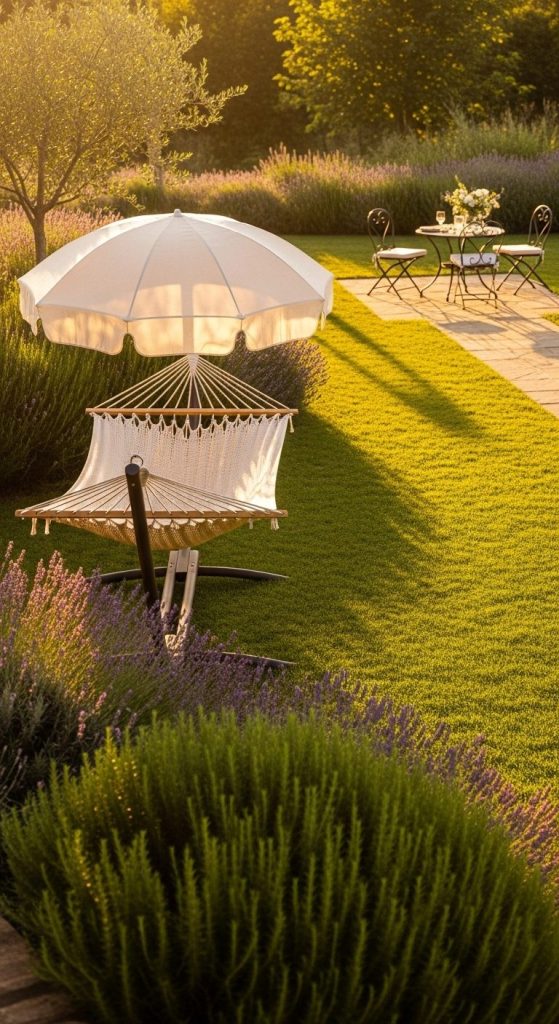
For all-day comfort, a hammock with a built-in canopy keeps the sun (and sometimes drizzle) at bay. It’s functional and stylish.
Pros:
- Sun protection: Ideal for open spaces with little shade.
- Year-round usability: Enjoy relaxing even in light rain or wind.
- Polished aesthetic: Feels more like a resort installation.
Cons:
- More expensive setup: Often costs more than standard hammocks.
- Bulky frame: Needs a stable surface and space.
Takeaway:
A canopy hammock says: “I take my relaxation seriously.” It’s a practical luxury worth every minute spent lounging under it.
5. Two-Person Hammock
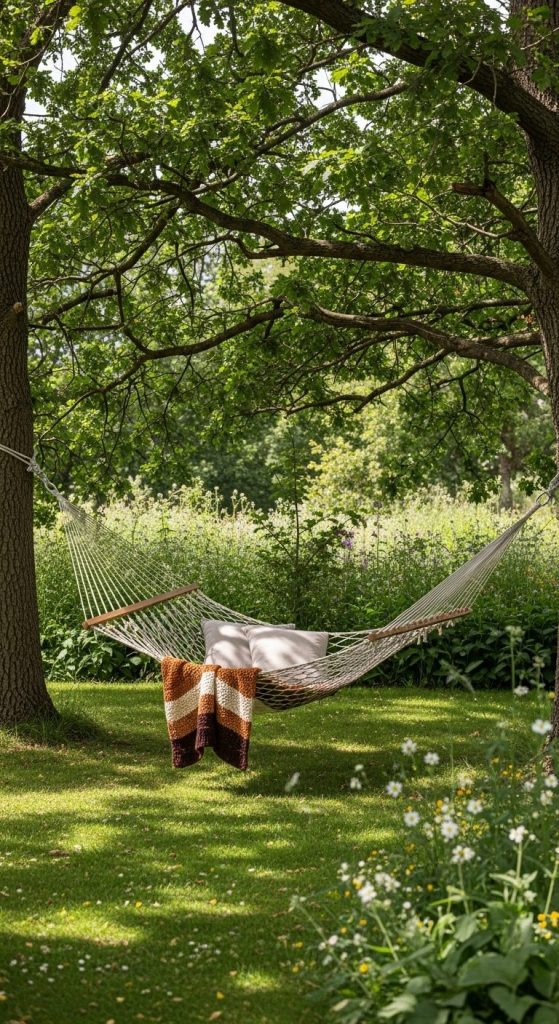
Why enjoy paradise alone when you can share it? A double hammock invites cozy moments — perfect for couples or even pets.
Pros:
- Extra comfort and width: Great for lounging with someone or sprawling solo.
- Durable construction: Designed to hold more weight safely.
- Creates an intimate, romantic spot.
Cons:
- Requires strong support: Must be securely anchored to handle two people.
Takeaway:
A two-person hammock is the definition of quality time — whether it’s heart-to-heart talks or peaceful silence under the trees.
6. Rope Hammock Over a Garden Pond
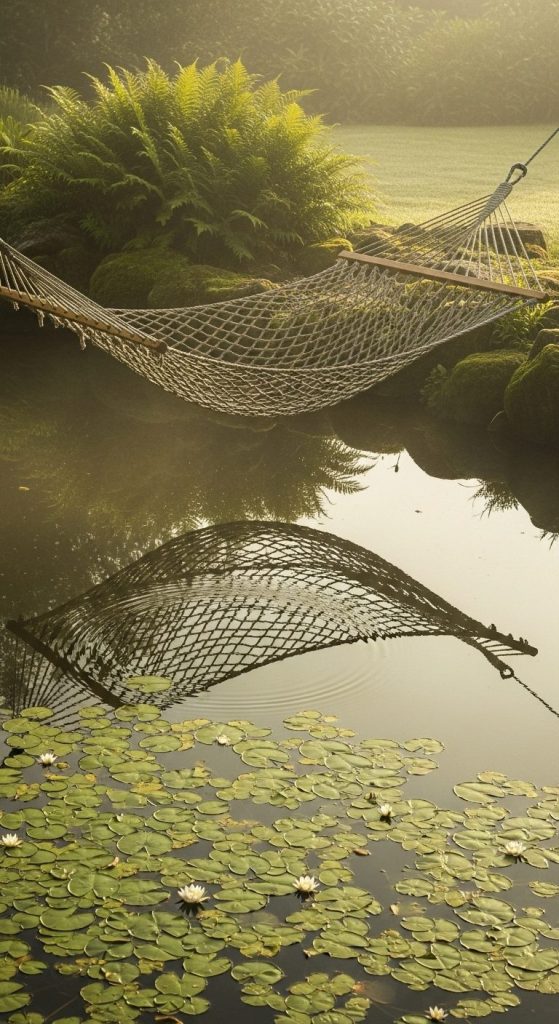
Now we’re getting fancy. Hanging a rope hammock near or partially over a reflective pond creates an almost meditative effect. The sound of water, the reflections — pure serenity.
Pros:
- Visually stunning: Becomes a garden focal point.
- Sound of water amplifies relaxation.
- Perfect for warm weather lounging.
Cons:
- Higher setup difficulty: Needs secure, waterproof support structures.
Takeaway:
Few experiences rival floating above a pond in a hammock — it’s like being suspended between earth and sky.
7. Hammock with Mosquito Net

If bugs tend to crash your relaxation time, a hammock with an integrated mosquito net is a game-changer.
Pros:
- Protection from insects: Enjoy peaceful naps even at dusk.
- Ideal for tropical or wooded gardens.
- Portable options great for camping too.
Cons:
- Slightly warmer inside: Airflow can be reduced by the netting.
Takeaway:
A mosquito-net hammock lets you enjoy nature — not battle it. Think of it as a cozy outdoor cocoon.
8. Hammock Chair
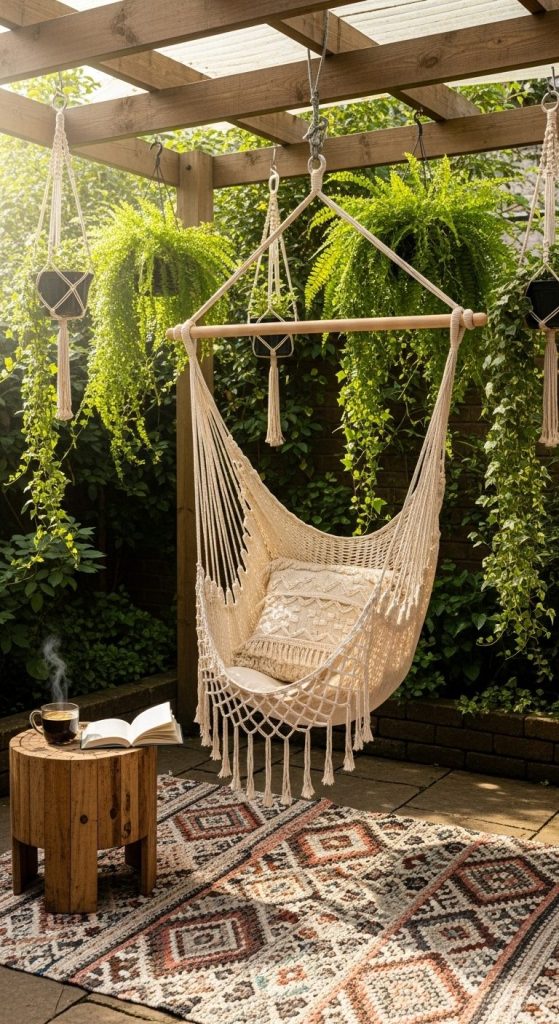
Short on space? Go vertical. A hammock chair gives you all the swing and comfort of a full hammock but in a smaller footprint.
Pros:
- Compact and versatile: Works on patios, balconies, or under pergolas.
- Upright design: Easier for reading or sipping coffee.
- Stylish statement piece indoors or outdoors.
Cons:
- Less room to lie flat: More for lounging upright than napping.
Takeaway:
A hammock chair brings a touch of playfulness to any garden corner — it’s functional, cozy, and irresistibly fun.
9. Between-Post Hammock on a Deck
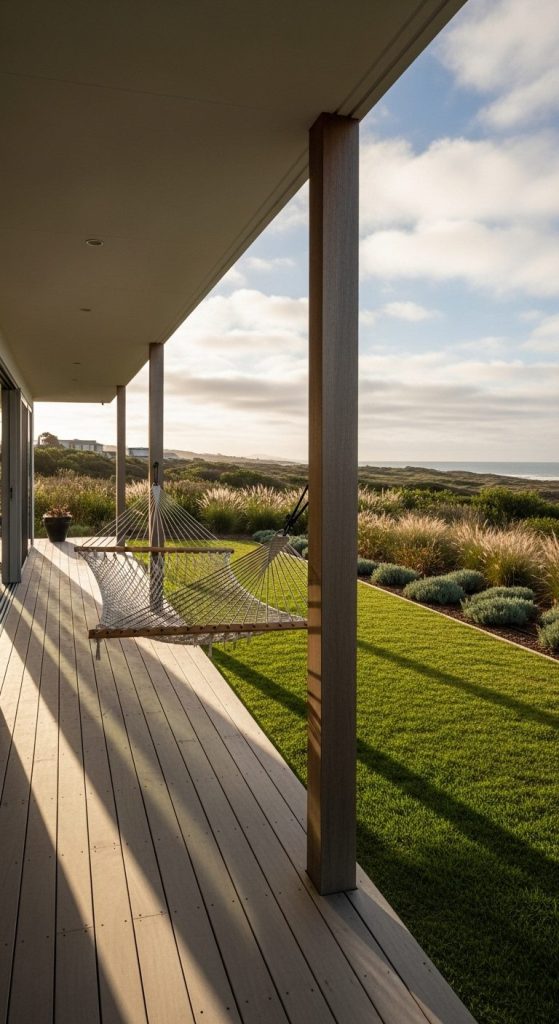
If your garden includes a deck or pergola, you can mount hammocks between posts for a clean, architectural look.
Pros:
- Custom fit: Integrates beautifully with built structures.
- Permanent, stable setup.
- Keeps hammock clean and off the ground.
Cons:
- Requires drilling or permanent anchors.
Takeaway:
This setup blends relaxation with design — your deck becomes an instant retreat with minimal visual clutter.
10. Fabric Hammock with Wooden Spreaders
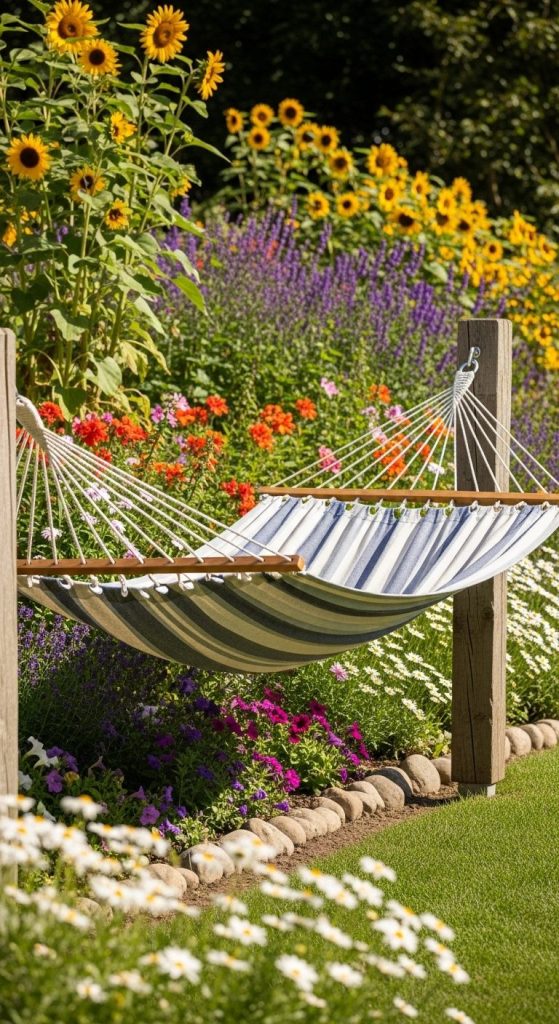
Unlike rope hammocks that cocoon you, fabric hammocks with spreader bars stay open and inviting. They’re perfect for sunbathers or anyone who prefers more stability.
Pros:
- Easy entry and exit: Great for seniors or guests.
- Comes in bright patterns: Adds a pop of color to your garden.
- Feels sturdy and supportive.
Cons:
- Less “hugging” comfort: Doesn’t wrap around your body.
Takeaway:
A spreader-bar hammock delivers style and simplicity — ideal for those who like structure with their serenity.
11. Hammock Under a Pergola
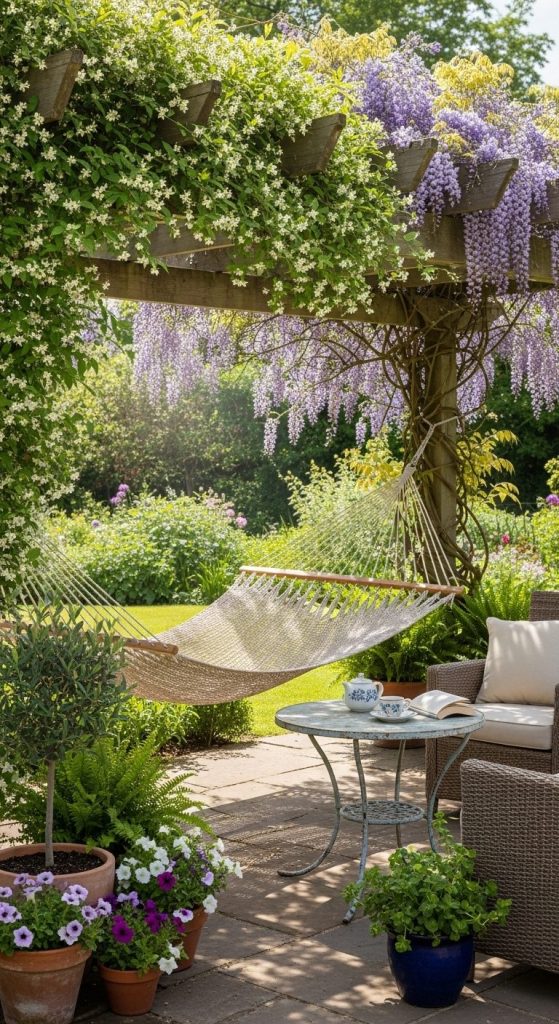
If you’re all about aesthetics, placing your hammock under a pergola adds definition and shade while making it look intentionally designed.
Pros:
- Architectural balance: Turns your hammock into a centerpiece.
- Customizable with climbing plants or curtains.
- Partial shade creates comfort all day.
Cons:
- Requires sturdy construction: Pergola beams must support weight safely.
Takeaway:
A pergola-framed hammock feels curated, not improvised — a designer touch that elevates any backyard.
12. Portable Camping Hammock in the Garden
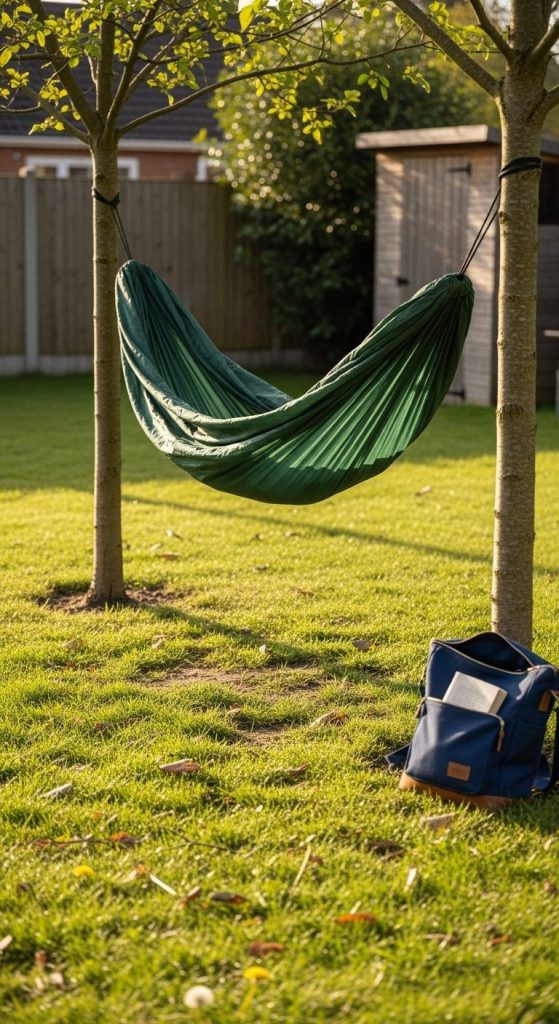
Lightweight, foldable hammocks aren’t just for the trail. Set one up between trees in your garden for instant relaxation on demand.
Pros:
- Budget-friendly and easy to store.
- Quick setup and takedown.
- Perfect for renters or small gardens.
Cons:
- Less decorative: More functional than aesthetic.
Takeaway:
A camping-style hammock brings spontaneous relaxation wherever you need it — simple, smart, and satisfying.
13. Hammock Beneath Fairy Lights

This one’s pure magic. Hanging fairy lights above your hammock instantly transforms your garden into a nighttime wonderland.
Pros:
- Creates an enchanting evening atmosphere.
- Extends usability into night hours.
- Pairs beautifully with candles or lanterns.
Cons:
- Requires safe outdoor-rated lighting installation.
Takeaway:
A hammock beneath twinkling lights is more than decor — it’s an experience that feels like your own private retreat.
14. Tropical-Style Hammock Zone
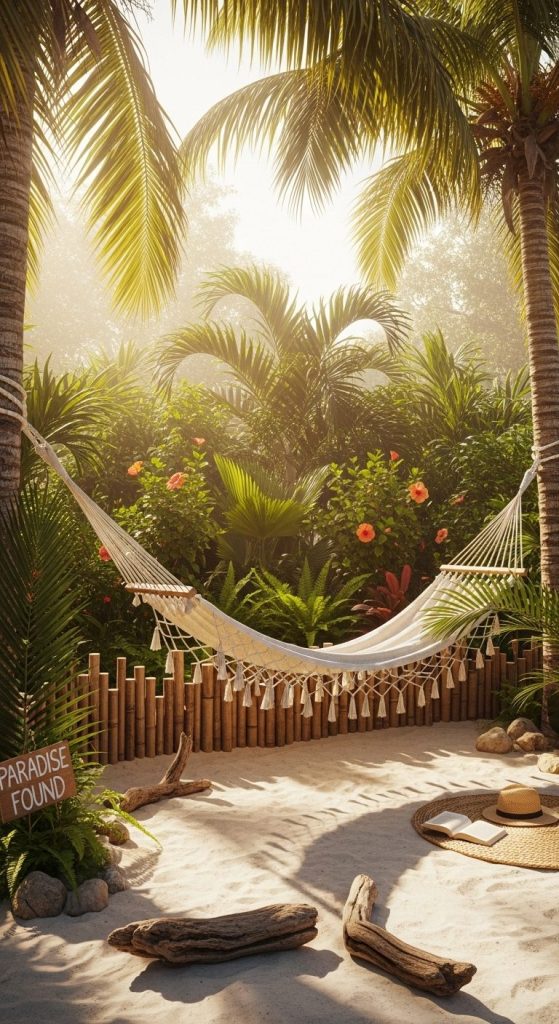
Channel Bali or the Caribbean with a tropical hammock corner surrounded by palm plants, bamboo decor, and sand or gravel flooring.
Pros:
- Immersive vacation vibe at home.
- Low maintenance with tropical plants.
- Fun for themed parties or staycations.
Cons:
- May not suit colder climates year-round.
Takeaway:
A tropical hammock corner turns your garden into paradise — a permanent “out of office” zone.
15. Hammock Nook with Curtains or Privacy Screens
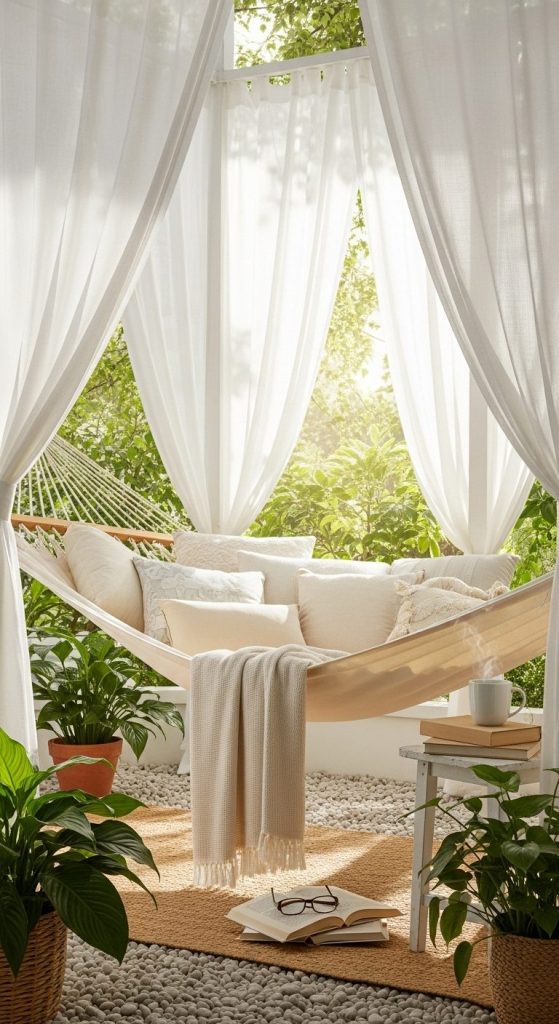
For a cozy reading or napping nook, add privacy curtains or trellised panels around your hammock. It’s like your own outdoor bedroom.
Pros:
- Adds privacy and wind protection.
- Visually separates your relaxation zone.
- Perfect for introverts (or mid-day nappers).
Cons:
- Requires some structure or frame to hang curtains.
Takeaway:
A curtained hammock nook blends comfort and seclusion — your peaceful escape from the world, just steps from your door.
Conclusion: Swing into Serenity
A well-placed hammock can change how you experience your garden — it’s not just furniture, it’s an invitation.
Whether you prefer rustic simplicity, bohemian flair, or resort-level luxury, these garden hammock ideas prove one thing: relaxation doesn’t have to be complicated. It just needs intention.
The next time you step outside, imagine a spot where sunlight filters through leaves, a hammock sways gently, and the rest of the world fades away. IMO, that’s the real definition of garden perfection.

William Martin is a passionate bowler who spends most of his weekends playing the sport. With years of intense experience under his belt, William decided to share his knowledge by creating BOWLING OCEAN. Join me on this journey to explore the world of bowling and discover the tips and tricks to becoming a pro.

